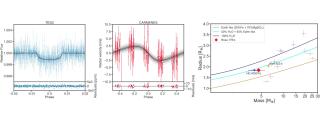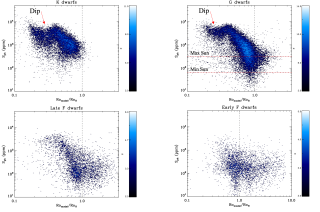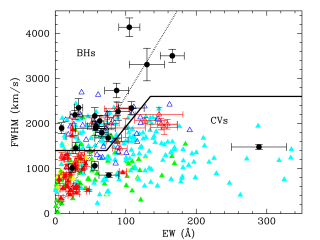Los autores muestran que la superficie del asteroide primitivo (65) Cibeles está cubierta por una capa fina de granos de silicatos anhidricos, mezcllados con pequeñas cantidades de hielo de agua y sustancias orgánicas complejas, de manera similar a las fases de no equilibrio que coexisten en las superficies de los cometas. La coexistencia de hielo de agua y silicatos anhidricos en la superficie indica que la hidratación del silicato no ocurrió, lo que sugiere que la temperatura de la superficie ha sido siempre muy baja.
El equipo de investigadores es el mismo que publicó en abril pasado dos artículos en Nature mostrando la primera evidencia de hielo de agua y moléculas orgánicas en un asteroide, 24 Themis. Ambos, 65 Cibeles y 24 Temis, están en la misma región del cinturón de asteroides entre Marte y Júpiter, aproximadamente a 3,2 UA. El asteroide 65 Cibeles es algo más grande que 24 Themis. Cibeles tiene un diámetro de 290 km, mientras que Themis tiene un diámetro de 200 km.
Este descubrimiento sugiere que esta región de nuestro sistema solar contiene más hielo de agua de lo previsto, y apoya la teoría que sugiere que buena parte del agua y de los orgánicos que fueron los bloques sobre los que se construyó la vida, provienen de asteroides que han chocado con la Tierra.
Fecha de publicación
Referencias
(2011) A&A 525, A34
Más información
(65) Cybele: detection of small silicate grains, water-ice, and organics
Context. (65) Cybele is the most representative member of a population of primitive asteroids in the outer edge of the main belt, the Cybele asteroids. Recent dynamical models suggest that a significant fraction of them originated in the primordial transneptunian disk, so the study of the physical properties of these asteroids is potentially a useful test of these models. Aims. Our aim is to obtain information on the surface composition of this asteroid. In particular we want to obtain information on the composition and properties of the regolith and the possible presence of ices and organic materials. Methods. We present 2–4 μm and 5–14 μm spectroscopy of (65) Cybele obtained with the NASA IRTF telescope and Spitzer Space Telescope respectively. We compare the results with spectra of Trojan asteroids and asteroid (24) Themis. We analyze the 2–4 μm spectrum using scattering models and we apply thermal models to the 5–14 μm data. Results. The 2–4 μm spectrum of (65) Cybele presents an absorption band centered at ∼3.1 μm and more weaker bands in the 3.2–3.6 μm region, very similar to those observed in (24) Themis. No hydrated silicates are detected. From the spectrum in the 5–14 μm region an effective diameter D = 290 ± 5 km, a beaming paramete η = 0.967 ± 0.014, and a geometric visible albedo pV = 0.05 ± 0.01 are derived using the NEATM thermal model. The emisivity spectrum in the 5–14 μm range exhibits an emission plateau at about 9 to 12 μm with an spectral contrast of ∼5%. This emission is similar to that of Trojan asteroids and active comets and may be due to small silicate grains being imbedded in a relatively transparent matrix, or to a very under-dense (fairy-castle) surface structure. The lower amplitude of the silicate emission in Cybele’s spectrum with respect to that of Trojan asteroids could be attributed to larger dust particles and/or a slightly denser structure. Conclusions. The surface of (65) Cybele is covered by a fine anhydrous silicate grains mantle, with a small amount of water ice and complex organic solids. This is similar to comet surface where non-equilibrium phases coexist. The presence of water-ice and anhydrous silicates is indicative that hydration did not happened or is incomplete, suggesting that the temperatures were always sufficiently low.
Año
2010


